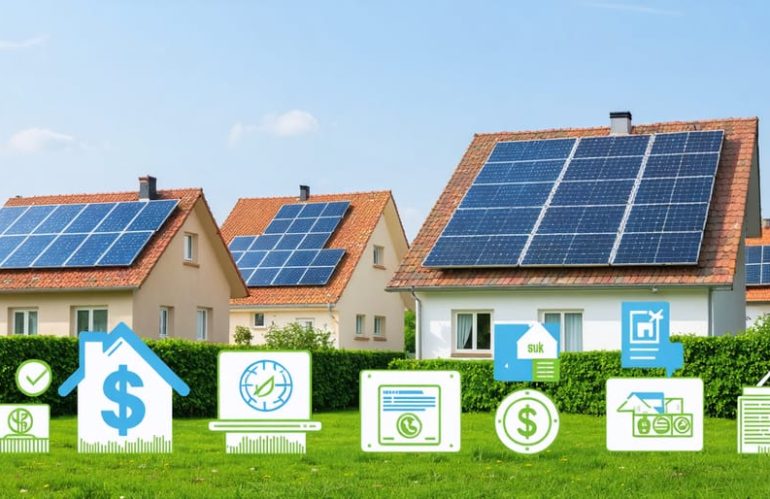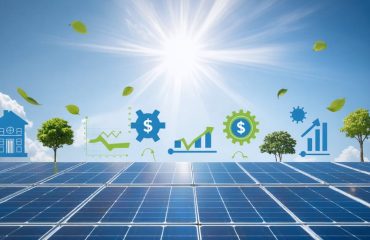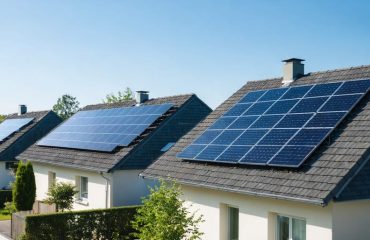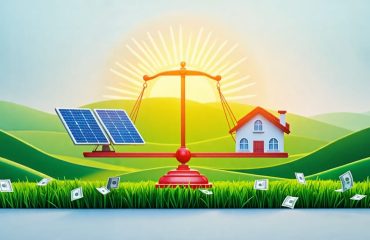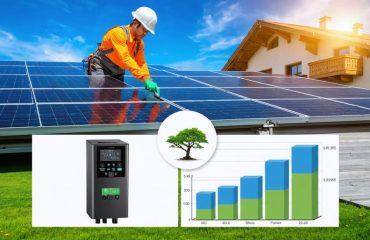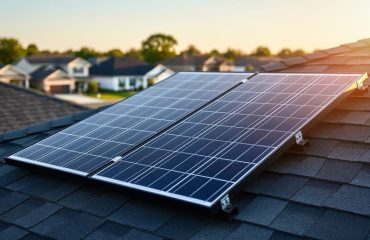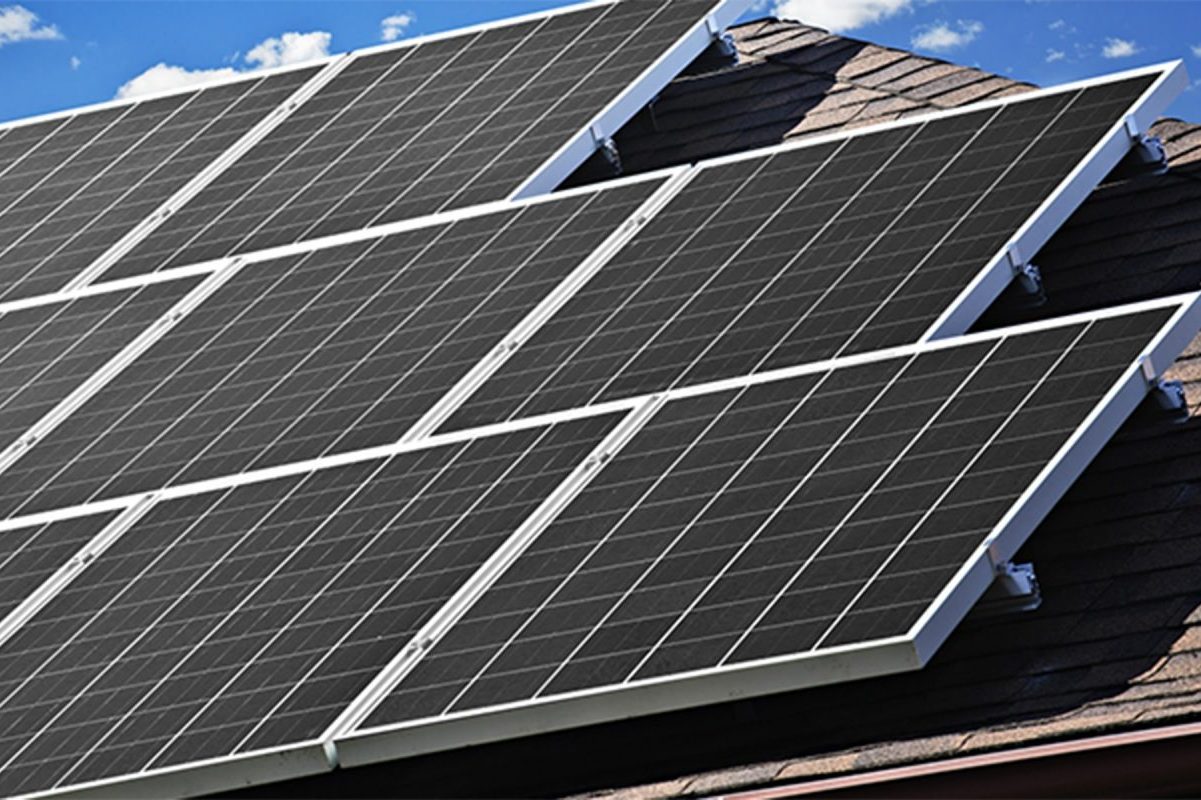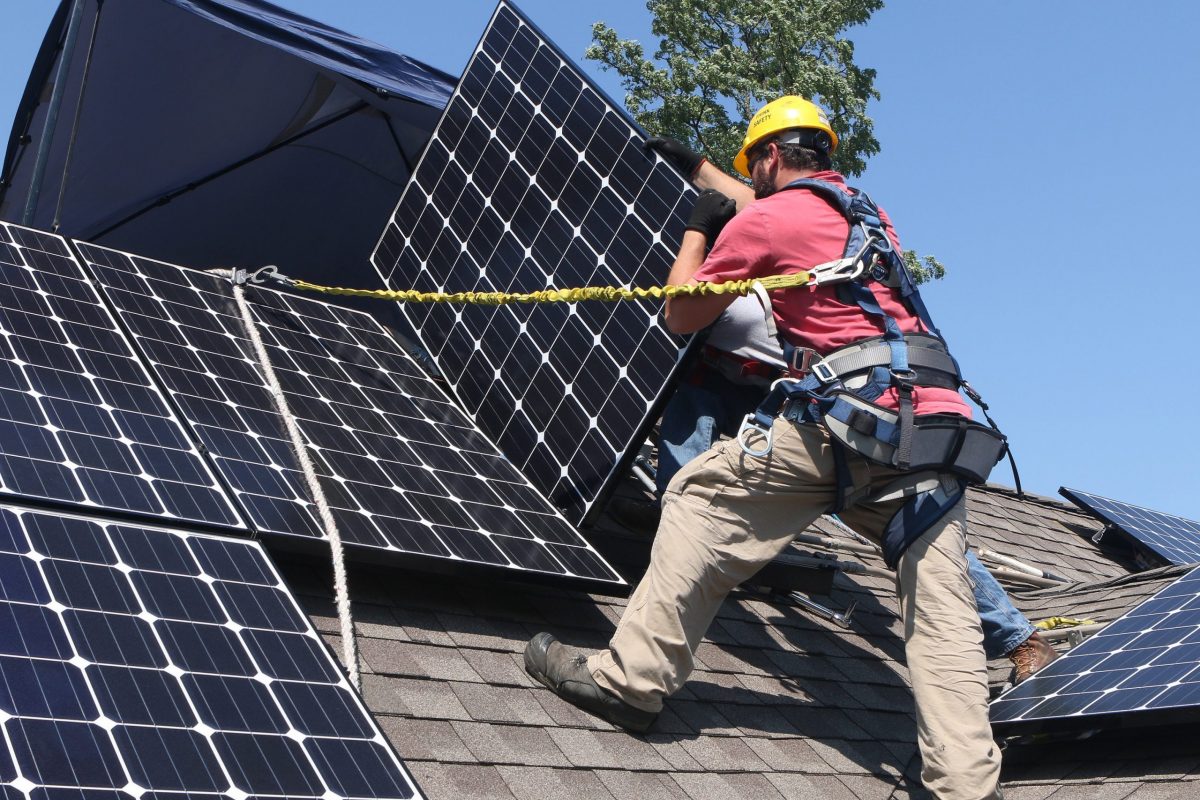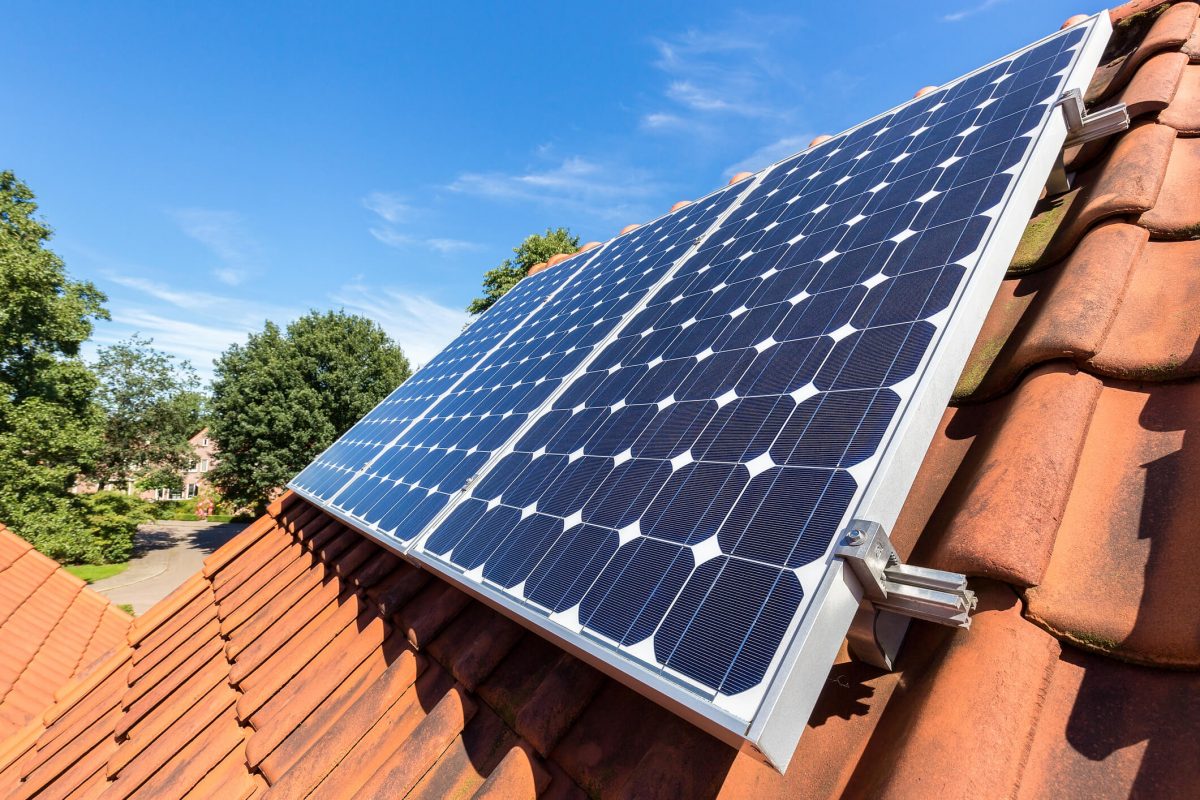Solar project financing has revolutionized the way homeowners and businesses transition to clean energy, making substantial solar installations accessible without massive upfront costs. Modern financing solutions now enable property owners to generate their own renewable energy while potentially saving thousands on electricity bills from day one.
Through innovative financial structures like Power Purchase Agreements (PPAs), solar leases, and specialized solar loans, the traditional barriers to solar adoption have largely disappeared. These mechanisms allow organizations to implement large-scale solar projects with minimal initial investment while leveraging tax incentives, renewable energy credits, and performance guarantees.
The solar project finance landscape continues to evolve, with new options emerging as technology costs decline and investor confidence grows. From community solar initiatives to green bonds and sustainable infrastructure funds, the marketplace offers increasingly flexible solutions tailored to diverse needs and circumstances.
Whether you’re a homeowner looking to offset your energy costs or a business aiming to achieve sustainability goals, understanding the fundamentals of solar project finance is crucial for making informed decisions about renewable energy investments. With careful planning and the right financing structure, solar power can become both an environmental win and a smart financial move.
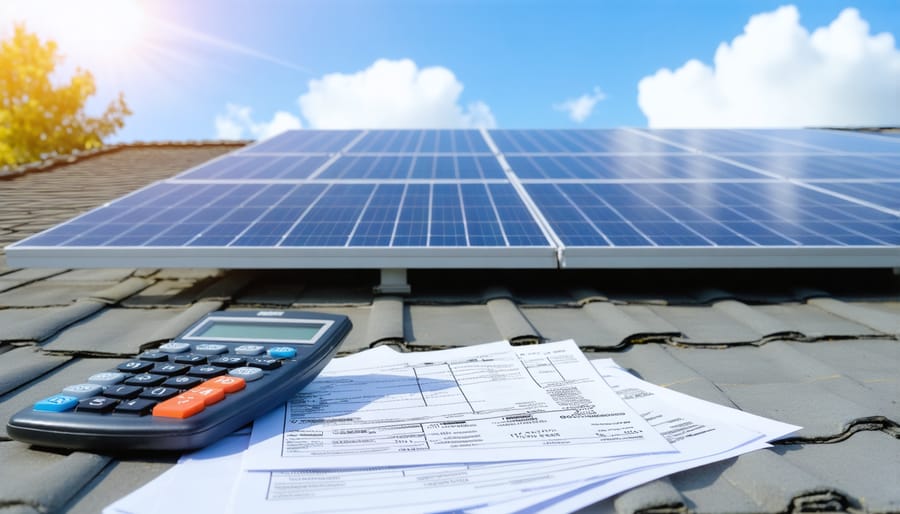
Understanding Solar Project Finance Models
Power Purchase Agreements (PPAs)
Power Purchase Agreements (PPAs) offer homeowners a straightforward way to go solar without the hefty upfront costs. Under a PPA, a solar provider installs and maintains a system on your property at no initial cost. You simply agree to purchase the electricity generated by the panels at a predetermined rate, typically lower than your current utility rates.
This arrangement provides immediate savings on your monthly energy bills while ensuring predictable electricity costs for the duration of the agreement, usually 20-25 years. The solar provider handles all maintenance, repairs, and system monitoring, eliminating worries about upkeep costs.
PPAs are particularly attractive because they require zero down payment and guarantee system performance. If the panels produce less electricity than promised, the provider makes up the difference. As energy prices rise over time, your locked-in PPA rate becomes increasingly valuable, potentially leading to greater savings.
The agreement also includes options to purchase the system outright after a certain period, transfer it to a new homeowner if you move, or have it removed at the end of the term.
Solar Leases
Solar lease arrangements offer homeowners a way to benefit from solar power without the significant upfront costs of purchasing a system. Under a lease agreement, you essentially rent the solar panels from a provider who maintains ownership of the equipment. You’ll make fixed monthly payments while enjoying reduced electricity bills and clean energy benefits.
Unlike a solar loan or direct purchase, leasing requires little to no money down and includes maintenance coverage. However, you won’t be eligible for tax incentives or rebates, as these go to the system owner. The lease term typically runs 20-25 years, with options to buy the system, renew the lease, or have the equipment removed at the end.
When comparing leasing to buying, consider your long-term goals. While leasing offers immediate savings and simplicity, purchasing generally provides better financial returns over time. Some leases include annual payment escalators, so carefully review terms before signing. Many homeowners find leasing particularly attractive when they want to go solar with minimal initial investment and responsibility for system maintenance.
Direct Purchase with Solar Loans
Solar loans offer a straightforward path to owning your solar system while spreading the cost over time. These loans typically range from 5 to 20 years, with interest rates between 3% and 8%, depending on your credit score and lender. Unlike leases, you’ll own the system outright and can claim valuable tax incentives and rebates directly.
Many solar installers partner with specialized lenders to offer convenient financing options, often with $0 down payment. Local banks and credit unions frequently provide competitive solar loan programs as well. The monthly loan payments are usually structured to be less than or equal to your current electricity bill, making the switch to solar budget-friendly from day one.
Remember that solar loans are secured by the equipment itself, similar to a car loan, which helps keep interest rates reasonable. Many loans also offer flexible prepayment options without penalties, allowing you to pay off your system faster if desired.
Financial Benefits and Incentives
Federal Tax Credits
The federal government offers substantial solar tax incentives through the Investment Tax Credit (ITC), making solar installations more affordable than ever. As of 2024, homeowners can claim 30% of their total solar system costs as a tax credit, significantly reducing the overall investment. This credit applies to both equipment and installation costs, with no upper limit on the amount you can claim.
To qualify, you must own your solar system (rather than lease it) and have sufficient tax liability to claim the credit. The system must be installed at your primary or secondary residence within the United States, and it needs to be operational during the tax year you’re claiming the credit.
The 30% rate is guaranteed through 2032, after which it will gradually decrease to 26% in 2033 and 22% in 2034. Unused portions of the credit can be carried forward to future tax years, ensuring you maximize your benefits even if you can’t claim the full amount immediately. Remember to keep all documentation related to your solar installation for tax purposes.
State and Local Incentives
Beyond federal incentives, many states and local governments offer additional programs to make solar installation more affordable. These can include state tax credits, rebates, and performance-based incentives that vary by location. For example, some states offer property tax exemptions for solar installations, while others provide sales tax exemptions on solar equipment purchases.
Many utility companies also participate in net metering programs, allowing homeowners to earn credits for excess energy their solar systems produce. Some municipalities offer special financing programs or grants specifically for renewable energy projects, making solar more accessible to local residents.
To maximize your savings, check with your state’s energy office, local utility providers, and municipal government for available programs. Many states maintain databases of current solar incentives, and some offer additional benefits for low-income households or specific neighborhoods. These local incentives can often be combined with federal programs, significantly reducing your overall installation costs and improving your return on investment.
Remember that incentive programs frequently change, so it’s important to verify current offerings when planning your solar project.
Long-term Savings Analysis
When evaluating solar project financing, understanding the long-term savings potential is crucial. ROI calculations for solar panels typically show that homeowners can expect to recoup their initial investment within 5-8 years, depending on local energy costs and available incentives.
The financial benefits extend well beyond the break-even point. Most solar panel systems have a lifespan of 25-30 years, providing two decades or more of essentially free electricity after the initial payback period. On average, homeowners save between $10,000 and $30,000 over the lifetime of their solar installation.
Monthly energy savings start immediately after installation, with many households reporting 50-90% reductions in their electricity bills. These savings increase over time as utility rates continue to rise, typically at 2-3% annually. Additionally, homes with solar installations often see increased property values, with studies showing an average increase of $15,000 to $20,000.
The environmental benefits translate into financial gains through various incentives and credits. Many utility companies offer net metering programs, allowing homeowners to earn credits for excess energy production. Combined with federal tax incentives, state rebates, and sustainable energy credits, the long-term financial picture becomes even more attractive for homeowners considering solar investment.
Making the Right Choice
Comparing Financing Options
When evaluating solar financing options, homeowners have several paths to choose from, each with distinct advantages. Cash purchases offer immediate ownership and maximum long-term savings, eliminating interest charges and providing full access to tax incentives. However, this option requires significant upfront capital.
Solar loans present a middle-ground solution, allowing homeowners to own their system while spreading costs over time. These loans typically offer competitive interest rates and maintain eligibility for tax benefits, making them increasingly popular among homeowners.
Solar leases and Power Purchase Agreements (PPAs) require minimal or no upfront investment. With leases, you pay a fixed monthly amount, while PPAs charge based on actual energy production. Both options typically include maintenance and repairs, though you won’t own the system or qualify for tax incentives.
PACE financing ties solar payments to property taxes, offering longer repayment terms and potential tax-deductible interest. This option stays with the property if you sell your home, though not all areas offer PACE programs.
Home equity loans or lines of credit can also fund solar installations, often featuring lower interest rates due to using your home as collateral. These loans may offer tax-deductible interest and flexible repayment terms, making them an attractive option for homeowners with significant equity.
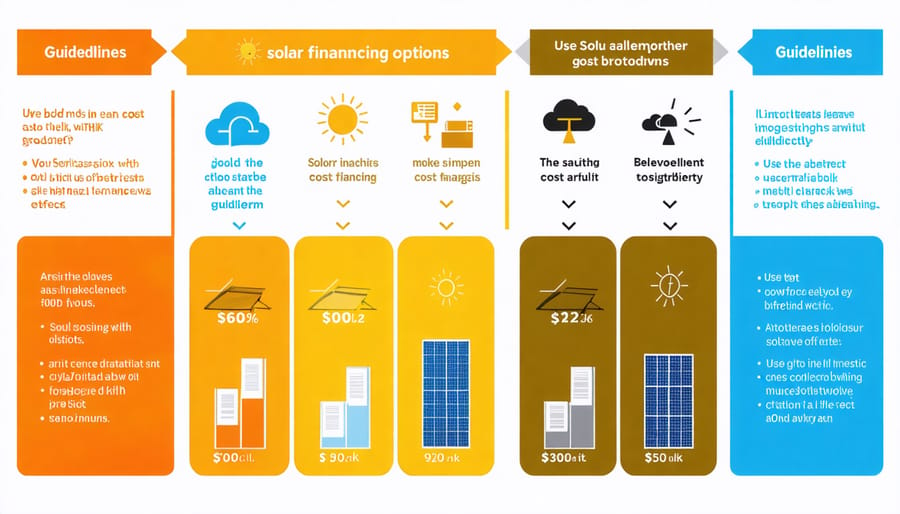
Key Factors to Consider
When exploring solar project financing, several key factors deserve careful consideration to ensure you make the best choice for your situation. First, evaluate your current financial position, including your credit score and available cash reserves, as these will influence which financing options are available to you.
Consider the total cost of ownership, not just the initial installation expenses. This includes monthly payments, interest rates, maintenance costs, and potential increases in property insurance. Also, factor in the expected energy savings and how they’ll offset your financing costs over time.
The length of the financing term is crucial – longer terms mean lower monthly payments but higher total interest costs. Be sure to understand if there are any prepayment penalties or balloon payments that could affect your long-term financial planning.
Examine available tax incentives, rebates, and solar renewable energy credits (SRECs) in your area. These can significantly reduce your overall costs and should be factored into your financing decision. Some financing options may affect your ability to claim certain incentives, so research this carefully.
Property ownership and your long-term plans are also important considerations. If you’re planning to sell your home, understand how different financing options might impact the sale process. Some loans may be transferable to new owners, while others might require full payment upon sale.
Lastly, carefully review the warranty terms and the financial stability of both your solar installer and financing provider to ensure long-term security for your investment.

Getting Started with Solar Project Finance
Required Documentation
To secure solar project financing, you’ll need to prepare several essential documents. Start with proof of ownership for your property and recent utility bills showing your energy consumption patterns. Your credit report and financial statements, including tax returns from the past 2-3 years, will be required by most lenders.
A professional solar assessment report, detailing your property’s solar potential and estimated energy production, is crucial. This should include a detailed site survey and shade analysis. You’ll also need a comprehensive project proposal from your chosen solar installer, including equipment specifications, costs, and projected energy savings.
For incentives and rebates, prepare your tax documentation and ensure you have the necessary forms for federal tax credits. Local utility company documentation may be required for net metering programs. If applying for state-specific incentives, additional qualification paperwork might be needed.
Finally, ensure you have proper building permits and documentation showing compliance with local zoning laws and homeowners’ association requirements, if applicable. Having these documents organized beforehand will streamline your solar financing process significantly.
Application Process
The solar project financing application process typically follows a straightforward path that begins with gathering essential documentation. Start by collecting recent utility bills, proof of income, property ownership documents, and your credit report. These materials help lenders assess your eligibility and determine appropriate financing terms.
Next, research and compare different solar financing providers to find the best rates and terms for your situation. Many solar installers have partnerships with preferred lenders and can provide initial quotes. Request proposals from multiple providers to ensure you’re getting competitive offers.
Once you’ve selected a lender, complete their formal application form, which usually can be done online. The lender will review your materials and may request additional documentation. During this time, they’ll also assess your roof’s solar potential and estimated energy production.
After approval, carefully review the financing agreement, including interest rates, term length, and any fees. Many lenders offer digital signing options for convenient processing. Upon signing, your solar installer can begin scheduling your system installation, typically within a few weeks of financing approval.
Remember to inquire about available tax incentives and rebates during the application process, as these can significantly reduce your overall costs.
Solar project financing has evolved to become more accessible and affordable than ever before, making clean energy a realistic option for homeowners across the country. Throughout this guide, we’ve explored various financing options, from solar loans and leases to PPAs and cash purchases, each offering unique advantages to suit different financial situations and goals.
Remember that generous federal tax incentives, state rebates, and local programs can significantly reduce your initial investment, making solar more affordable than you might think. When combined with long-term energy savings and increased property value, solar installations often prove to be a smart financial decision for homeowners.
As you move forward with your solar project, take time to carefully evaluate your financing options, compare multiple quotes from reputable installers, and review all terms and conditions thoroughly. Consider consulting with a financial advisor to determine which financing solution best aligns with your financial goals and circumstances.
The transition to solar energy is not just an investment in your property; it’s an investment in a sustainable future. With stable energy costs, reduced carbon footprint, and potential earning opportunities through net metering, solar power offers both immediate and long-term benefits for homeowners.
Take the first step today by requesting quotes from local solar installers and exploring available financing options in your area. Your journey toward energy independence and sustainability starts with making an informed decision about solar project financing.

